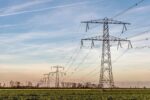
More flexibility thanks to standardization of protocols
An important goal is to achieve maximum flexibility in the energy economy
The Flexible Power Alliance Network (FAN) is a network of energy-related organizations, institutions and companies, including Technolution Spark. FAN is researching Smart Energy solutions for the energy transition, focusing on homes. An important goal is to achieve maximum flexibility in the energy economy. And FAN’s efforts are bearing fruit: the platform has drawn up an open standard that is currently being assessed for its suitability as the new EN norm.
Flexibility necessary due to decentralization
One of the greatest challenges in the energy transition is to maintain a balance between the supply and demand of power. Electricity that is generated has to be consumed immediately. When power was still exclusively generated centrally in large power plants, the energy producers had full control. They could continuously adapt the amount of power generated to current demand. But now the energy transition is bringing increasingly decentralized power generation (decentralization) in its wake, this is not as simple anymore. FAN is studying the possibilities to realize more flexible demand: Smart Energy (or Residential Energy).
More flexibility thanks to standardization
Smart Energy comes in several manifestations. The basic idea is that homes and buildings dynamically and automatically adapt their power demand to the supply. This can be done by switching washing machines on or off, by storing energy in batteries, for example of electric vehicles, or by turning climate systems up or down. But the devices involved will have to be equipped to do these things, and this in turn requires standardized information and communication protocols. FAN has made an important step towards this goal by defining a standard for information protocols, S2 (also known as EFI). This is currently being evaluated by national organizations in the EU member states.
From information to communication
The information protocols describe the interface between on-location devices and the energy grid, as well as the information that is communicated across this interface. An important feature of the S2 protocol is that it is an abstraction. It speaks only of the type of energy and is independent of the device itself. The technical realization of the interface and the communication will be the next step. Various FAN partners are working together with Technolution Spark to draw up a number of technical reports that will form the basis for as wide an implementation as possible of the flexible energy interface.
Searching for Customer Energy Managers (CEMs)
A crucial role is reserved in the Smart Energy plans for Customer Energy Managers (CEMs). These are the systems and partners that will coordinate the communication between power grid and building, and include such things as domestic appliances, building management systems and smart meters, but also grid operators, energy suppliers and device suppliers. FAN is expressly seeking cooperation with CEMs, which will be a major influence on protocol development and technical reports. The expectation is that successful pilot projects with CEMs will be a major boost for FAN’s Smart Energy plans. Interested in working together? If so, please contact us.



